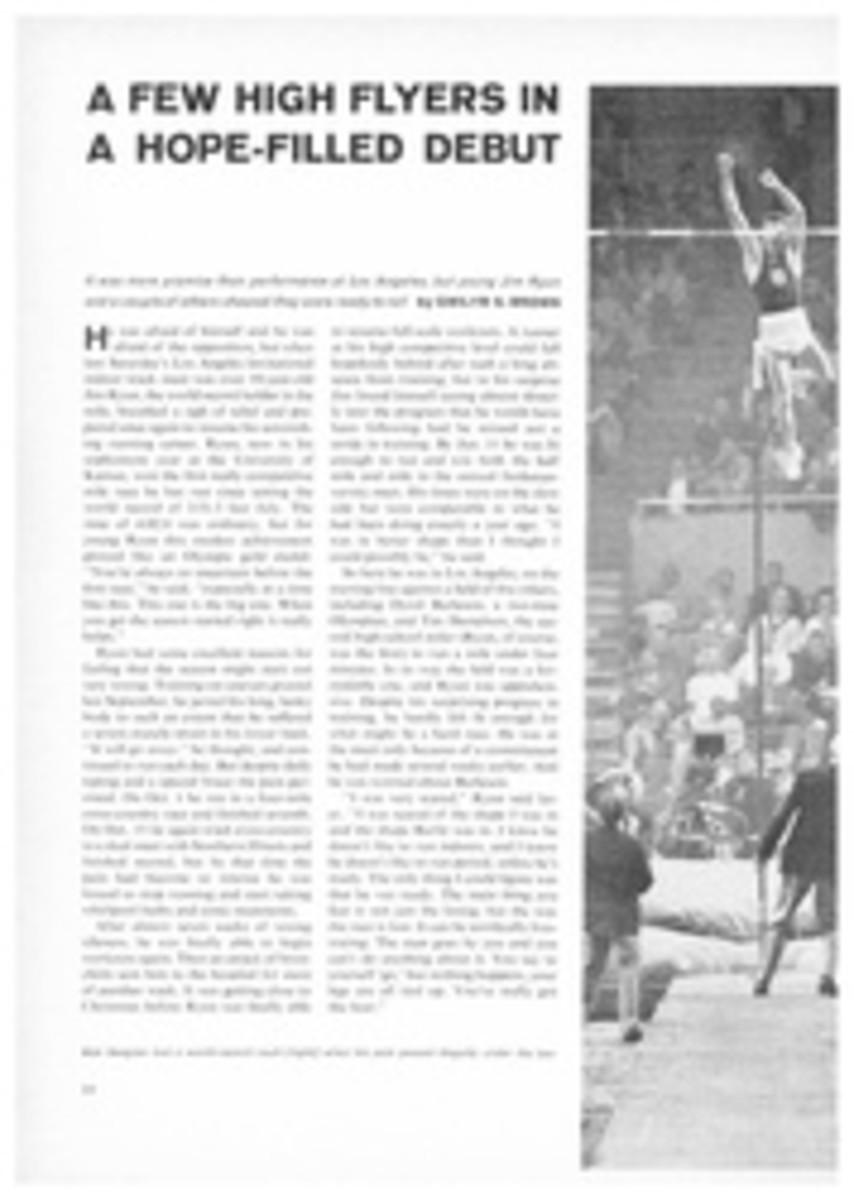
Silence Reigns when Japan's Tosas Fight
There are 25,000 registered fighting dogs in Japan, where dogfighting is still legal, although a growing body of humanitarians wants to outlaw it. Japan's dogfight fans include doctors, lawyers, farmers, miners, laborers and even company executives, but their interest is less in the outcome than in the sport itself. Strangly enough, for a country that has mastered the art of miniaturization, the Japanese fighting dog, known as the Tosa, is rather large. The Japanese say he is a descendant of the old English mastiff, a massive beast that sometimes weighed as much as 200 pounds.
Japanese tradition has it that the modern Tosa originated in the 17th century, when an English frigate struck a reef in Tosa Bay on the eastern side of Shikoku, the smallest of the four Japanese home islands. The Japanese of that distant day were not noted for their hospitality and what became of the captain and crew of the ship was never recorded. But in the wreckage of the frigate, according to the legend, the Japanese found a huge, brown dog, whose instinct as a fighter led him to defeat all the best local dogs.
Records were kept of this dog's bloodline. Through the years, the original Tosa strain was mixed with blood from the akita, a strong draft dog from northern Japan similar to a Siberian husky, the English bulldog and the English pointer. The English pointer cross produced a sprinkling of white, which persists today in the dainty white stockings often seen on a modern Tosa. However, the Tosa district is no longer the chief breeding area for the fighting dogs, which are bred all over Japan, many close to Tokyo.
The modern Tosa is still large; one recent champion weighed in at 154 pounds. This is heavier than the average fighting Tosa, whose weight is closer to 90 pounds. The Tosa often has the black muzzle of the English mastiff and is usually fawn in color. A chunky dog, 26 to 30 inches at the shoulder, with a full but not barreled chest and a powerful jaw, the Tosa has none of the sculptured musculature of a boxer or the statuesque tenseness of a Doberman pinscher. He is rather a shambling, rugged, not unfriendly fellow with the solid hulk of a football tackle.
Outside the fighting ring, the Tosa has the phlegmatic temperament of most massive dogs. Don't trouble him and he won't trouble you. He is surprisingly tolerant of smaller dogs, as long as they remain respectful. And, as with many working breeds, the Tosa functions better when not subjected to cuddling, petting and other demonstrations of human affection. Tosa owners are unanimous in believing that too much affection makes a dog less capable of achieving and holding a fighting edge. Few Tosas are treated as family pets, and most are housed in large wooden cages. Perhaps because of this, they tend to be one-man dogs.
Tosas are trained to be fighters, but they are carefully kept away from serious combat with other dogs until they are at least 1½ years old. At that age, a Tosa will fight older, retired dogs for short periods of time, to develop his confidence and teach him the technique of fighting. Because the Japanese consider a silent dogfight more satisfying esthetically than a noisy one, Tosas must learn to fight without making a sound. If a young dog growls while fighting, he is reprimanded but is still encouraged to continue the fight. This lends an eerie quality to the contests, like the silence that prevails when Siamese fighting fish are battling to the death.
The dogs fight on a raised wooden platform covered with old carpeting in an octagonal ring, 15 feet wide. The dog owners and three referees perch around it during the fight, while the audience sits slightly below, as at a boxing match.
The Japanese, with their love of rank and ceremony, have designated three championship grades: Yokozuna, Ozeki and Sekiwake—the same ranks used in classifying Sumo wrestling champions. The rules vary for different classes. In the championship classes, the dogs are allowed one minute of grace, during which they may growl or whine without forfeiting the match. The newer, unranked dogs are allowed two minutes of preparation time. Once this period is over, if either dog makes the slightest sound he will lose the match. Several matches are stopped during every tournament, when alert judges hear a sound the audience does not.
The time limit for a match is 30 minutes, but they rarely go the limit. If both dogs are on their feet fighting to the end, each is credited with a win. If excessive bleeding occurs, if one dog establishes immediate superiority over another or if one dog is unwilling to fight, the match is halted.
After a particularly hard exchange, the judges will often stop the fight to look the dogs over. If a dog sits down from exhaustion, he must regain his feet within three minutes or lose. Tosas will sometimes lean on each other, ribs pounding, paws thrown over their opponent's shoulders, and ignore the cries of their owners and the crowd to mix it up. If one dog begins fighting within three minutes and the other does not, the non-fighter loses. Experienced dogs seem to fight by the rules, resting periodically before starting in again.
The Japanese fans' attitude toward dogfighting is best understood when one realizes there is no gambling or betting. Tosas are fought strictly for sport, and when a judge stops a fight, his decision is never protested.
The atmosphere of a Japanese dogfight is like that of a family picnic. Men bring their wives and children, sit on straw mats and enjoy the spectacle. After the matches, owners bathe their dogs, dress them in the championship belt and robe proper to their status and parade them in front of the crowd. Silver loving cups, championship trophies and flags are presented to both winners and losers. Many bows and congratulations are exchanged and much good-humored chaffing goes on between the owners. Challenges are called as the crowd applauds the official announcement of a dog's victory or promotion to a higher championship class.
At the last prefectural (countywide) tournament in Ito, 70 miles south of Tokyo, a famous local champion suddenly refused to fight. His owner, wearing the heavy plus fours, two-toed cloth boots and English cap of the Japanese worker on a holiday, leaped into the ring to explain that his dog was nervous in front of such a large crowd. The owner tipped his cap and bowed low in four directions before leading his peace-loving dog away to wild applause.
Those in favor of the sport point out. that a Tosa has never been killed or crippled in a fight. A veterinarian is always present and his decision to stop a fight, like that of the referee, is never protested. Legal dogfighting in Japan is vastly different from the illegal sport conducted on remote farms in the United States by gamblers and coarse-grained owners. The Japanese sincerely believe their gigantic dogs enjoy the matches.
"Their tails wag as they fight, thus do they not fight with pleasure?" an old man asked me.
PHOTO
AFTER MATCHES THE FIGHTING DOGS, LIKE SUMO WRESTLERS, ARE GARBED IN THE CEREMONIAL ROBES INDICATIVE OF THEIR RANKS

